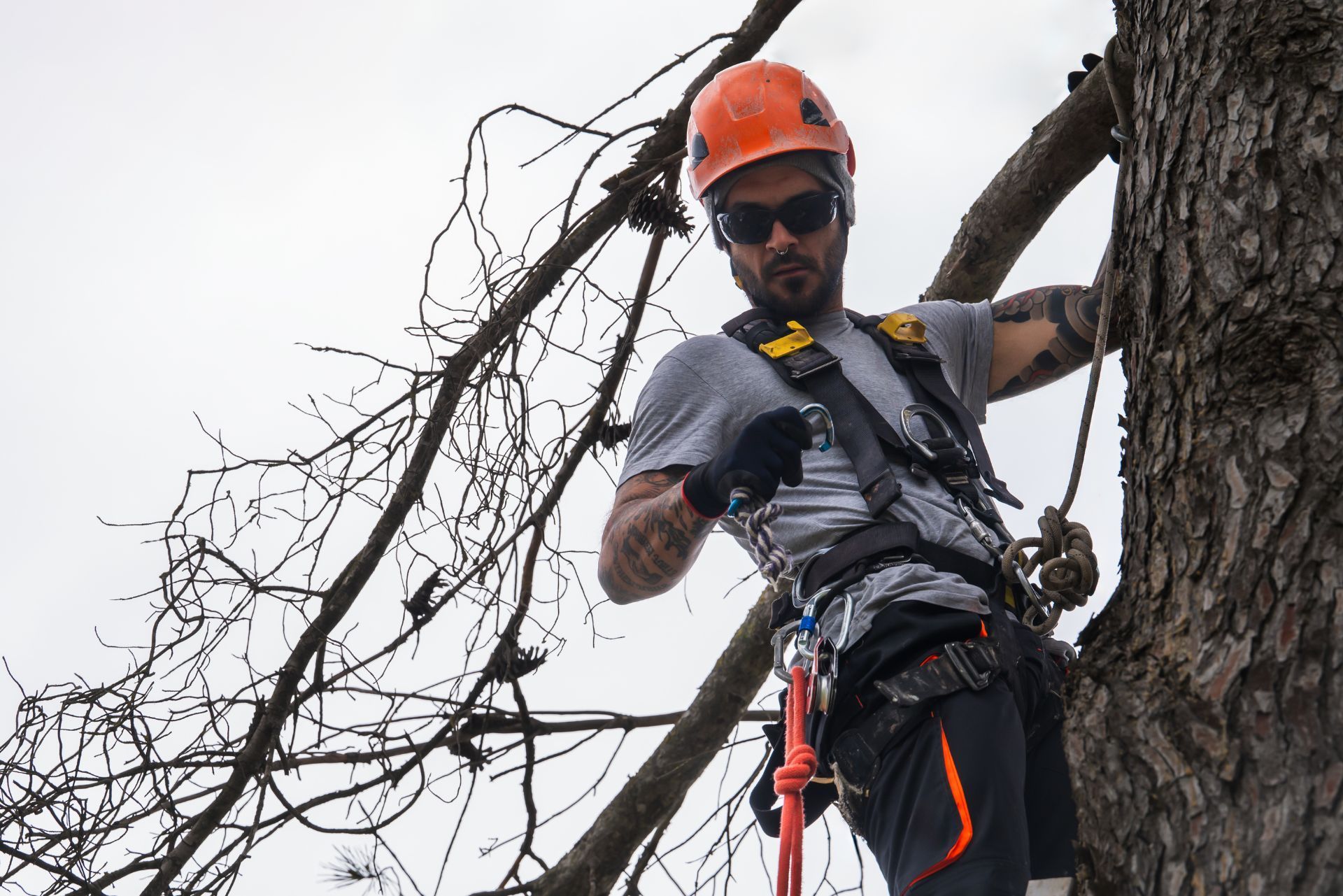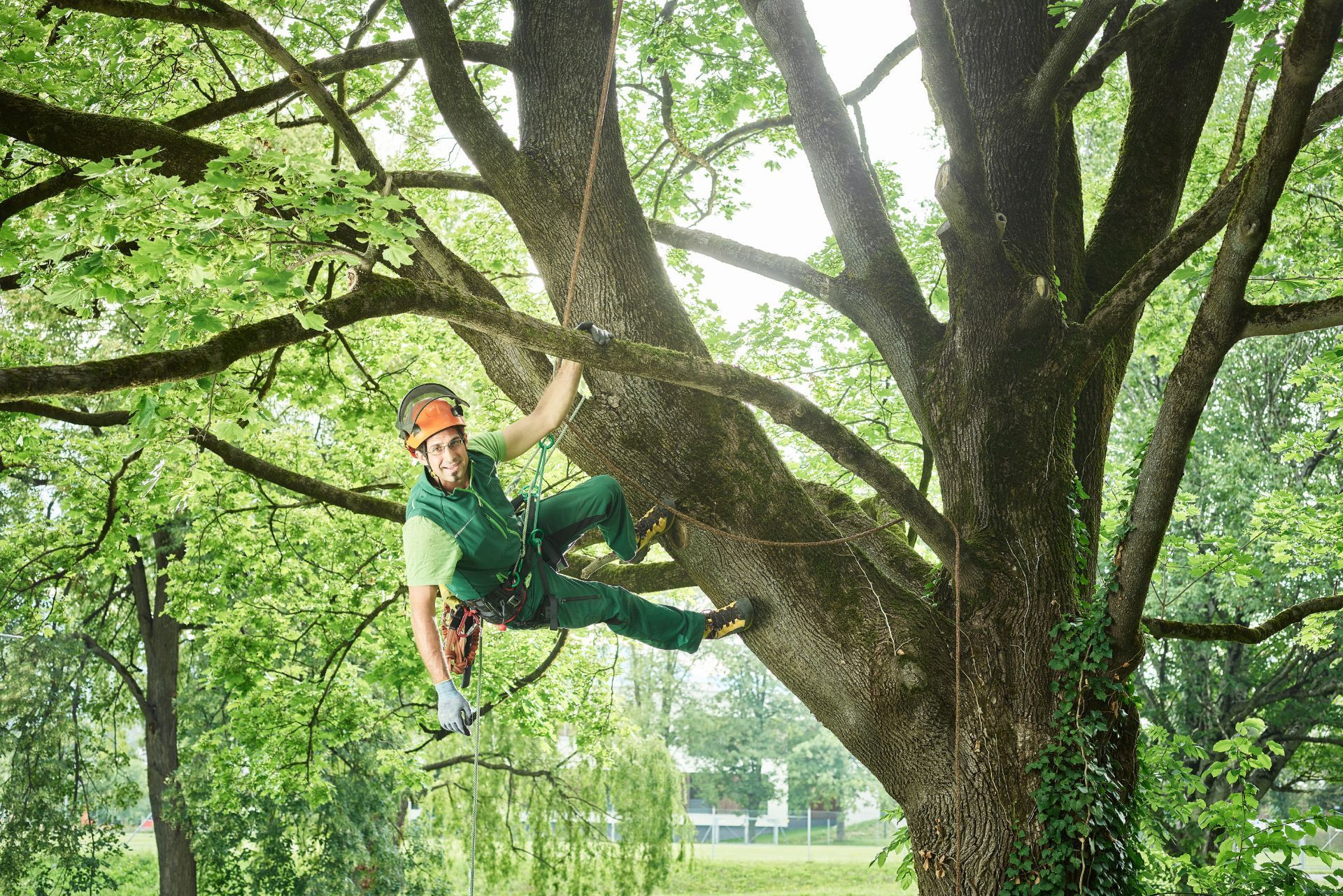Top 3 Recommended Policies
Index
Contact Us
Phone
Location
Operating as an arborist in Arizona comes with its unique set of challenges and responsibilities. From the physical demands of tree care to the potential liabilities involved, having the right insurance coverage is crucial for any arborist. This article delves into the essentials of Arizona arborist insurance, covering various aspects such as types of coverage, legal requirements, and tips for choosing the right policy.
Understanding Arborist Insurance
Arborist insurance is specifically designed to protect professionals who provide tree care services. This type of insurance covers a range of risks associated with tree maintenance, removal, and other related activities. Understanding the various components of arborist insurance can help professionals safeguard their business and ensure compliance with state regulations. Furthermore, as the demand for tree care services continues to grow due to urban development and environmental concerns, having the right coverage becomes increasingly important for maintaining a competitive edge in the industry.
What Does Arborist Insurance Cover?
Arborist insurance typically includes several key coverages that protect against different risks. These may include:
- General Liability Insurance: This coverage protects against claims of bodily injury or property damage caused by your operations. For instance, if a tree falls and damages a client's property, this insurance can cover the costs of repairs. Additionally, it can also cover legal fees if a client decides to pursue a lawsuit, providing peace of mind while you focus on your work.
- Professional Liability Insurance: Also known as errors and omissions insurance, this coverage protects against claims arising from negligence or failure to perform professional duties. If a client alleges that your work was subpar, this insurance can help cover legal fees and settlements. This is particularly crucial in an industry where the quality of work can significantly impact the health and safety of the surrounding environment.
- Workers' Compensation Insurance: If you employ workers, this insurance is essential. It covers medical expenses and lost wages for employees injured on the job, ensuring they receive the care they need without financial burden. Moreover, it fosters a safer work environment, as employees are more likely to report injuries knowing they are protected.
Why Arborist Insurance is Essential
The nature of tree care work involves inherent risks. Arborists often work at heights, use heavy machinery, and handle potentially hazardous materials. Without proper insurance, an accident could lead to significant financial loss. Arborist insurance not only protects against these risks but also enhances credibility with clients, showing that you take your responsibilities seriously. Additionally, many clients now require proof of insurance before hiring tree care professionals, making it a crucial factor in securing contracts and building long-term relationships in the industry.
Moreover, arborist insurance can also include coverage for equipment and tools, which are vital for day-to-day operations. Equipment breakdowns or theft can lead to costly delays and interruptions in service. By having insurance that covers these assets, arborists can ensure that they can quickly replace or repair their tools, minimizing downtime and maintaining their reputation for reliability. This comprehensive approach to risk management not only protects the business financially but also ensures that arborists can continue to provide high-quality services to their clients, fostering trust and loyalty in a competitive market.

Legal Requirements for Arborists in Arizona
In Arizona, certain legal requirements must be met for arborists operating a business. Understanding these regulations is vital for compliance and to avoid potential penalties.
Licensing and Certification
While Arizona does not require a specific license to operate as an arborist, obtaining certification from recognized organizations can enhance your credibility. Certifications, such as those from the International Society of Arboriculture (ISA), demonstrate expertise and commitment to industry standards. Additionally, pursuing ongoing education through workshops and seminars can keep arborists informed about the latest techniques and best practices in tree care, further solidifying their reputation in the field.
Insurance Requirements
While there are no state-mandated insurance requirements for arborists, having liability insurance is highly recommended. Many clients will require proof of insurance before hiring an arborist, and without it, securing contracts can be challenging. Additionally, workers' compensation insurance is required if you have employees, ensuring compliance with state labor laws. Arborists should also consider additional coverage options, such as equipment insurance, to protect their tools and machinery from theft or damage, which can be a significant financial burden in the event of an accident or unforeseen circumstances.
Environmental Regulations
In Arizona, arborists must also be aware of environmental regulations that may impact their work. For instance, certain tree species may be protected under state or federal laws, and improper removal or treatment of these trees can lead to severe penalties. Arborists should familiarize themselves with local ordinances regarding tree preservation, especially in urban areas where trees play a crucial role in maintaining ecological balance and enhancing community aesthetics. Furthermore, understanding the impact of invasive species and the importance of proper disposal methods for tree waste can contribute to sustainable practices within the industry.
Safety Standards
Safety is paramount in the arborist profession, and adhering to Occupational Safety and Health Administration (OSHA) standards is essential. Arborists should implement safety protocols to protect themselves and their employees from potential hazards associated with tree work, such as falling branches or equipment accidents. Regular safety training sessions can help ensure that all team members are well-versed in emergency response procedures and the proper use of personal protective equipment (PPE). By prioritizing safety, arborists not only comply with legal standards but also foster a culture of care that can enhance their business reputation and client trust.
Types of Arborist Insurance Policies
Choosing the right type of insurance policy is crucial for protecting your business. Various options are available, each tailored to meet specific needs.
General Liability Insurance
This is the most common type of insurance for arborists. It covers claims related to bodily injury and property damage. For example, if a client trips over equipment left on their property, general liability insurance can cover their medical expenses and any legal fees associated with the claim. Additionally, it can also protect against claims arising from advertising injuries, such as defamation or copyright infringement, which could occur if your marketing materials inadvertently misrepresent your services or use someone else's intellectual property without permission.
Commercial Auto Insurance
If you use vehicles for your arborist business, commercial auto insurance is necessary. This coverage protects against accidents involving vehicles used for business purposes, ensuring that any damages or injuries are covered. Personal auto insurance typically does not cover business-related incidents, making this coverage essential. Furthermore, commercial auto insurance can also provide coverage for non-owned vehicles, which is particularly beneficial if you have employees who use their personal vehicles for work-related tasks, ensuring that your business remains protected in various scenarios.
Equipment Insurance
Arborists rely on various tools and equipment, from chainsaws to chippers. Equipment insurance protects against theft, loss, or damage to your tools. This coverage can be a lifesaver, especially when equipment is essential for daily operations. Moreover, many policies offer additional coverage options, such as rental reimbursement, which can help cover the costs of renting replacement equipment while your tools are being repaired or replaced. This aspect is particularly important in the arborist industry, where downtime can lead to lost contracts and revenue, making it vital to keep operations running smoothly.

Factors Affecting Insurance Premiums
Understanding the factors that influence insurance premiums can help arborists make informed decisions when purchasing coverage. Several elements come into play when determining the cost of insurance.
Business Size and Revenue
The size of your business and its annual revenue significantly impact insurance premiums. Larger businesses with more employees and higher revenue may face higher premiums due to increased risk exposure. Conversely, smaller operations may benefit from lower rates. Additionally, the nature of the work performed by the business can also play a role; for instance, a larger company that specializes in high-risk tree removal may see even steeper premiums compared to a smaller company focused on routine maintenance and landscaping.
Claims History
Your claims history can also affect your premiums. If you have a history of frequent claims, insurers may view you as a higher risk, resulting in increased rates. Maintaining a clean claims record can help keep costs down. Furthermore, it’s worth noting that not all claims are equal; a single large claim can have a more significant impact on your premium than several smaller claims. Insurers may also consider the nature of the claims—claims related to liability or property damage can weigh more heavily than those for minor incidents.
Coverage Amounts
The amount of coverage you choose directly influences your premium. Higher coverage limits typically result in higher premiums. It's essential to find a balance between adequate coverage and affordability. Moreover, understanding the specific types of coverage available—such as general liability, professional liability, and workers' compensation—can help you tailor your policy to fit your business needs without unnecessary expenses. Some arborists may also opt for additional endorsements or riders to cover specialized equipment or unique risks, which can further affect the overall cost of their insurance premiums.
Choosing the Right Insurance Provider
Selecting the right insurance provider is as important as choosing the right coverage. An effective provider can make a significant difference in the claims process and overall customer service experience.
Researching Providers
Start by researching various insurance providers that specialize in arborist insurance. Look for companies with a strong reputation in the industry and positive customer reviews. Online resources and industry associations can provide valuable insights into reputable providers. Additionally, consider reaching out to fellow arborists or industry professionals for their recommendations and experiences. Networking within the community can lead to discovering lesser-known but highly effective insurance options that may not be as visible online.
Comparing Policies
Once you have a list of potential providers, compare their policies. Look for differences in coverage options, limits, deductibles, and premiums. Ensure that the policies align with your specific business needs and risks. It’s also wise to examine any exclusions or limitations that may apply, as these can significantly affect your coverage. Some providers may offer additional benefits, such as risk management resources or training programs, which can be invaluable for your business. Taking the time to thoroughly analyze these aspects can save you from unexpected challenges down the line.
Customer Service and Support
Customer service is crucial when it comes to insurance. Choose a provider known for responsive and helpful customer support. In the event of a claim, having a supportive team can make the process much smoother and less stressful. Consider testing their customer service by reaching out with questions before making a decision; this can give you a sense of their responsiveness and willingness to assist. Furthermore, look for providers that offer multiple channels of communication, such as phone, email, and live chat, ensuring you can reach them in the way that is most convenient for you. A provider that prioritizes customer satisfaction will not only help you navigate claims but will also be a partner in your business’s growth and security.
Common Exclusions in Arborist Insurance
While arborist insurance provides essential coverage, it's important to be aware of common exclusions that may affect your policy. Understanding these exclusions can help you avoid surprises when filing a claim.
Intentional Damage
Most insurance policies will not cover damages resulting from intentional acts. If an arborist intentionally damages a client's property, any claims related to that damage will likely be denied. It's crucial to maintain professionalism and integrity in all business dealings. This not only protects your reputation but also ensures that you remain in good standing with your clients and the community. Building trust through transparent communication and ethical practices can help mitigate the risk of disputes and potential claims.
Negligence or Poor Workmanship
Claims arising from negligence or poor workmanship may not be covered under general liability insurance. This is where professional liability insurance becomes essential, as it specifically addresses claims related to errors or omissions in your professional services. Arborists should invest in continuous education and training to stay updated on best practices and industry standards. By doing so, they can enhance their skills and reduce the likelihood of mistakes that could lead to costly claims, ultimately ensuring a higher level of service for their clients.
Wear and Tear
Insurance typically does not cover normal wear and tear of equipment or tools. Regular maintenance and proper care are necessary to prolong the life of your equipment. Arborists should budget for repairs and replacements as part of their operational costs. Additionally, keeping a detailed log of maintenance activities can be beneficial not only for tracking expenses but also for demonstrating responsible management of equipment. This proactive approach can also help in securing better insurance rates, as insurers often look favorably on businesses that take steps to minimize risk through diligent upkeep.
Tips for Lowering Insurance Premiums
While arborist insurance is crucial, it can also be a significant expense. Here are some tips to help lower premiums without sacrificing coverage.
Bundle Policies
Many insurance providers offer discounts for bundling multiple policies. For example, combining general liability and commercial auto insurance can lead to significant savings. It's worth inquiring about bundling options when shopping for insurance. Additionally, some insurers may offer package deals that include property insurance, workers' compensation, and even equipment coverage, which can further enhance your savings. By consolidating your policies, you not only simplify your insurance management but also build a stronger relationship with your provider, potentially leading to even more discounts in the future.
Implement Safety Measures
Investing in safety training and equipment can reduce the risk of accidents and claims. Insurance companies often reward businesses that demonstrate a commitment to safety with lower premiums. Consider offering training programs for employees and implementing safety protocols. Furthermore, maintaining a well-documented safety record can serve as a strong negotiating tool during policy renewals. Regular safety audits and employee feedback can help identify areas for improvement, ensuring that your workplace remains as safe as possible. This proactive approach not only protects your employees but also enhances your company's reputation, which can be beneficial in attracting new clients.
Review Your Coverage Regularly
As your business grows, your insurance needs may change. Regularly reviewing your coverage ensures that you have adequate protection without overpaying for unnecessary coverage. Consult with your insurance agent to assess your current policy and make adjustments as needed. It's also wise to stay informed about changes in the industry and any new risks that may arise, such as emerging pests or environmental regulations that could impact your work. By staying proactive and informed, you can ensure that your coverage remains relevant and cost-effective, helping you to avoid gaps in protection while maximizing your savings.
Conclusion
Arizona arborist insurance is an essential component of running a successful tree care business. Understanding the various types of coverage, legal requirements, and factors affecting premiums can empower arborists to make informed decisions. By choosing the right insurance provider and implementing safety measures, arborists can protect their business and focus on what they do best—providing exceptional tree care services.
Whether you are a seasoned arborist or just starting, investing in comprehensive insurance coverage is a step toward ensuring the longevity and success of your business. Stay informed, stay protected, and continue to thrive in the vibrant Arizona tree care industry.

